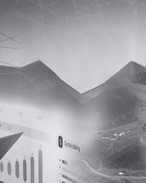The companies invited to apply included Australian Zirconia, which is targeting land south of Dubbo; Callabonna Resources and HNFL Holdings (north of Broken Hill); E J Resources (north of Broken Hill); Hartz Rare Earths (south of Cobar and north of Broken Hill); Iluka Resources (south of Broken Hill) and Marmota Energy (north of Broken Hill).
NSW Mines Minister Anthony Roberts said the expression of interest process involved a government review of each company's environmental performance, technical expertise and financial capacity.
"Uranium is a naturally occurring mineral that is found in rock, soil and water, yet at present, we have very little knowledge about the extent and distribution of the uranium reserves in NSW," he said.
"Exploration will allow the NSW government to better understand the extent of the state's resources and any potential economic benefits."
While a ban on uranium mining in NSW remains in place, laws to allow exploration came into effect in September 2012.
Companies that are granted an exploration licence will only be allowed to perform low impact exploration and environmental monitoring. Any other activities will require further approvals.
"Uranium exploration is controlled by strict environmental, health and safety standards," Roberts said.
"Safety systems are required to be in place to address specific circumstances associated with uranium exploration, including the identification, monitoring and management of material, dust management through reverse circulation drilling and occupational hygiene."
Uranium exploration and mining is approved in South Australia, Western Australia, Queensland, Tasmania and the Northern Territory.
South Australia is the nation's most active state, holding four uranium mines, while the Northern Territory hosts the Ranger operation.
Roberts said Australia had the largest global deposits of uranium, and any exported product must be used for peaceful purposes.
Major users of Australian uranium include nuclear power reactors in the US, France, UK, Finland, Sweden, South Korea, China and other European and Asian countries.
ESG
Explorers lining up for NSW uranium
SIX companies have been invited to apply for a uranium exploration licence in New South Wales following an expression-of-interest process.

Mining Journal Intelligence Global Leadership Report 2024: Net Zero
Gain insights into decarbonisation trends and strategies from interviews with 20+ top mining executives and experts plus an industrywide survey.

Mining Journal Intelligence Project Pipeline Handbook 2024
View our 50 top mining projects, handpicked using a unique, objective selection process from a database of 450+ global assets.

MiningNews.net Research Report 2024
Access a multi-pronged tool to identify critical risks and opportunities in Australia’s mining industry.

Mining Journal Intelligence Investor Sentiment Report 2024
Survey revealing the plans, priorities, and preferences of 120+ mining investors and their expectations for the sector in 2024.





















